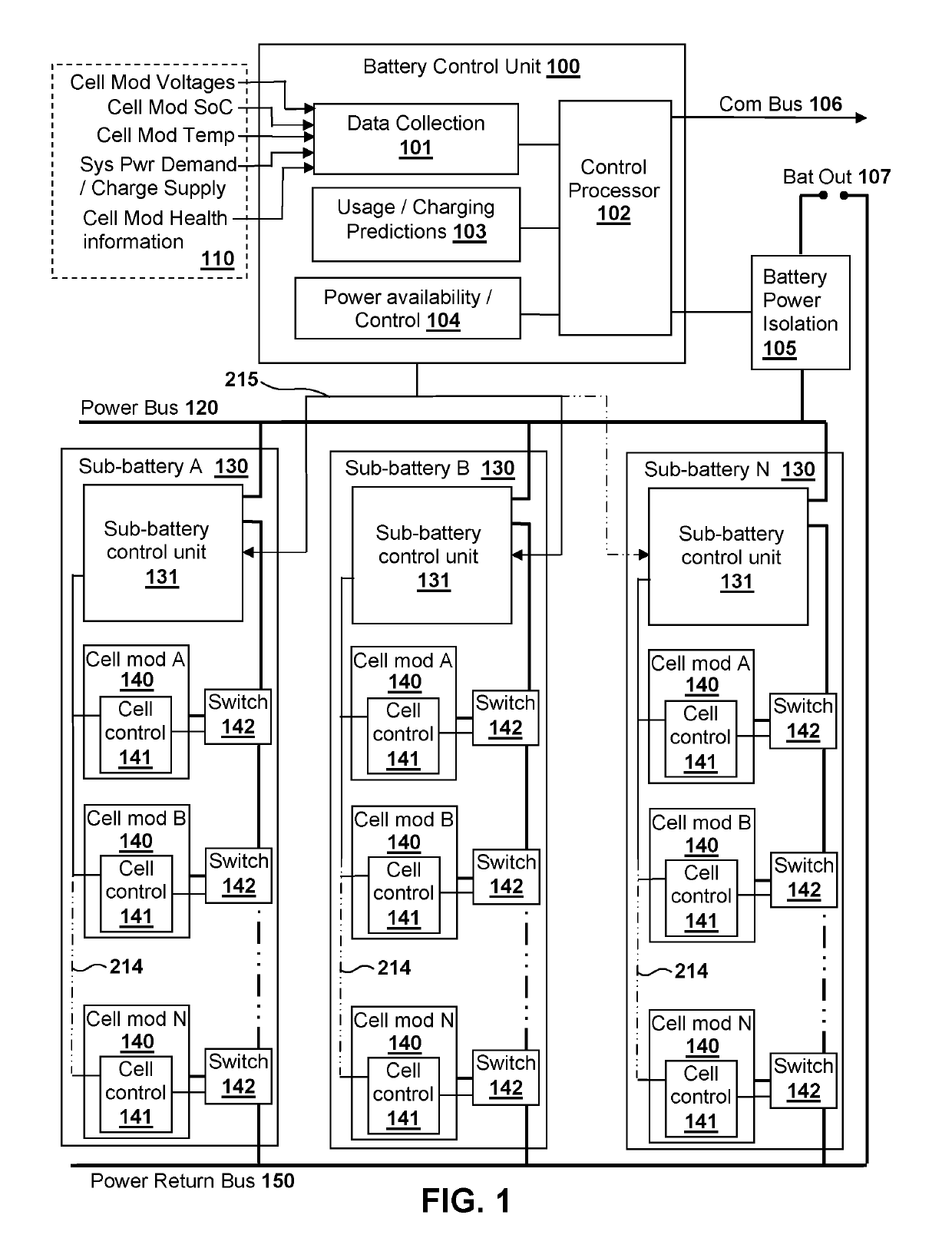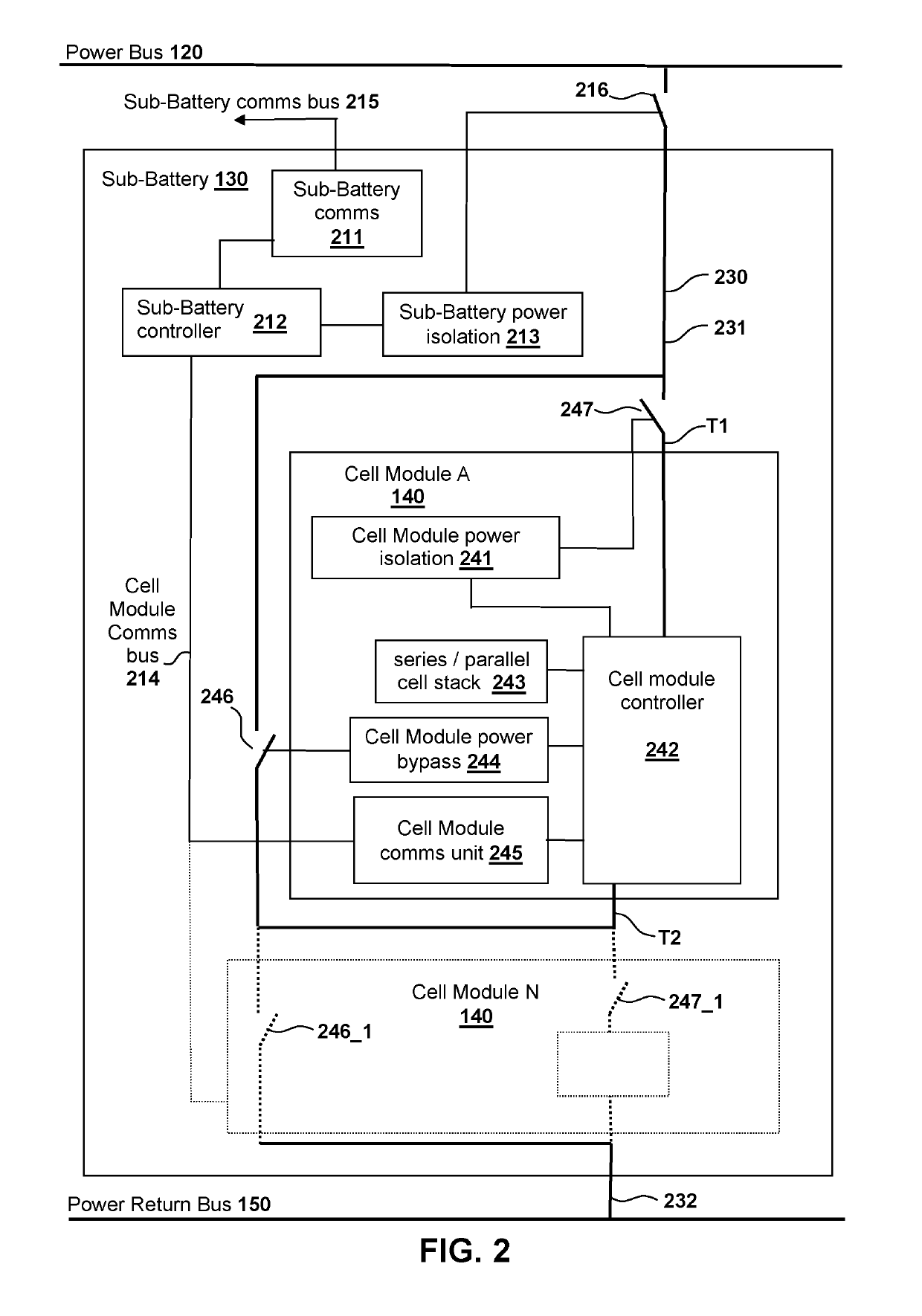Battery system comprising a control system
a control system and battery technology, applied in the field of battery systems, can solve the problems of compromising charging efficiency, affecting the efficiency of battery operation, and the inability to tailor cell chemistry to be excellent, and achieve the effect of improving battery operation efficiency
- Summary
- Abstract
- Description
- Claims
- Application Information
AI Technical Summary
Benefits of technology
Problems solved by technology
Method used
Image
Examples
Embodiment Construction
[0022]Embodiments of the invention will now be described by way of non-limiting example only and with reference to the accompanying drawings, in which:
[0023]FIG. 1 shows a block diagram of a battery system according to an embodiment of the invention;
[0024]FIG. 2 shows a block diagram of a sub-battery forming part of the FIG. 1 embodiment;
[0025]FIG. 3 shows a pie chart of the proportions of cell chemistries used in a battery system according to one implementation of the FIG. 1 embodiment; and
[0026]FIG. 4 shows a graph of sub-battery states of charge as the battery system of FIG. 3 is discharged.
[0027]The figures are not to scale, and same or similar reference signs denote same or similar features.
[0028]The block diagram of FIG. 1 shows a battery system with a battery control unit 100. The battery control unit 100 comprises a control processor 102 that is connected to a data collection unit 101, a usage / charging prediction unit 103, and a power availability / control unit 104. The contr...
PUM
 Login to View More
Login to View More Abstract
Description
Claims
Application Information
 Login to View More
Login to View More - R&D
- Intellectual Property
- Life Sciences
- Materials
- Tech Scout
- Unparalleled Data Quality
- Higher Quality Content
- 60% Fewer Hallucinations
Browse by: Latest US Patents, China's latest patents, Technical Efficacy Thesaurus, Application Domain, Technology Topic, Popular Technical Reports.
© 2025 PatSnap. All rights reserved.Legal|Privacy policy|Modern Slavery Act Transparency Statement|Sitemap|About US| Contact US: help@patsnap.com



